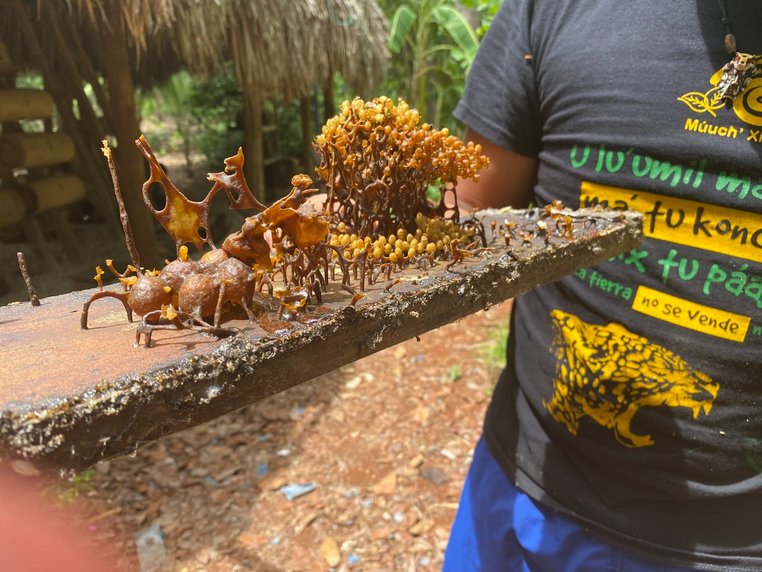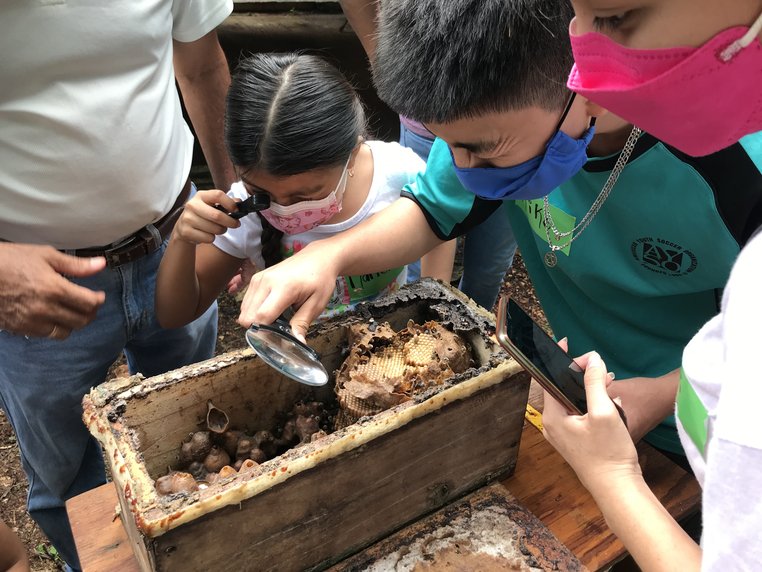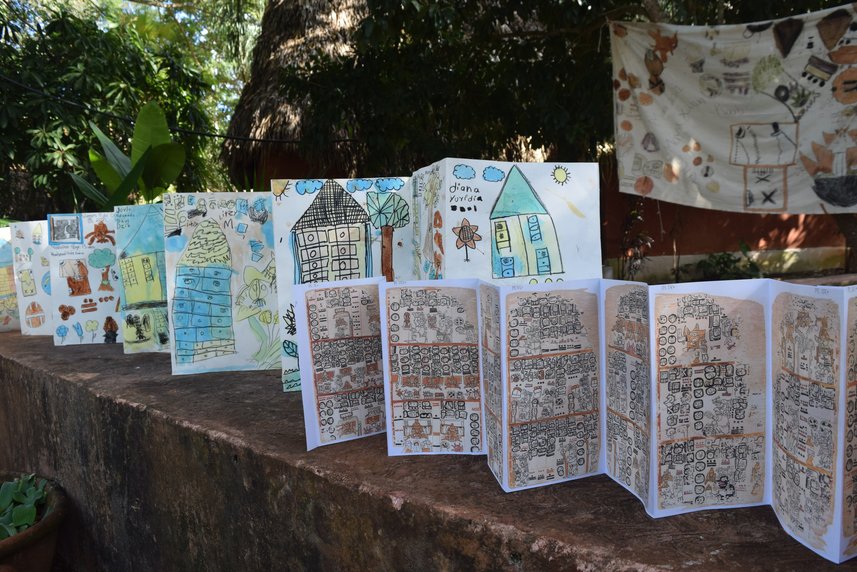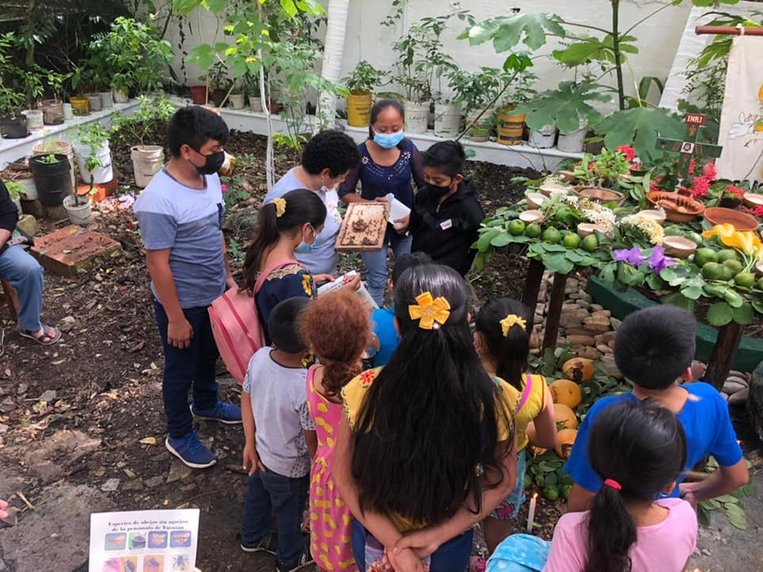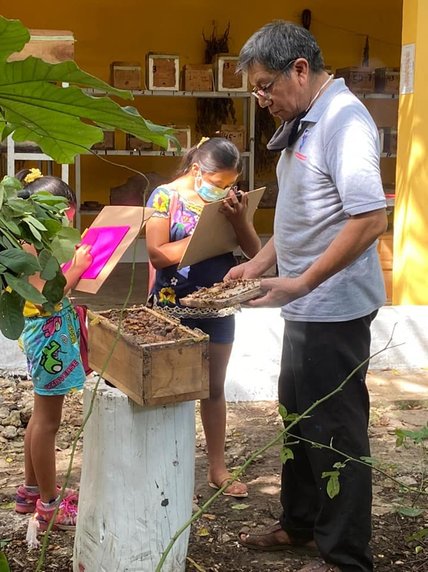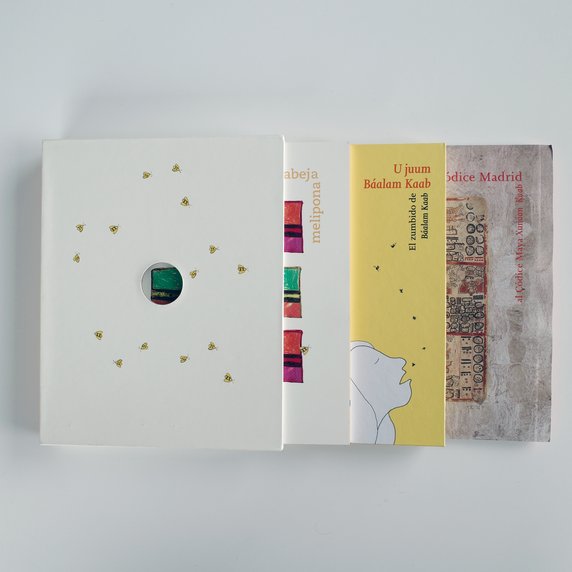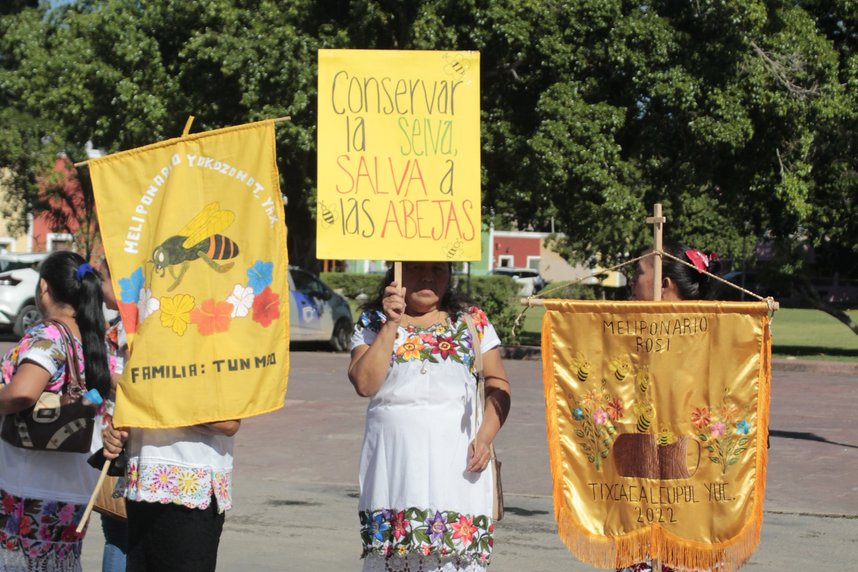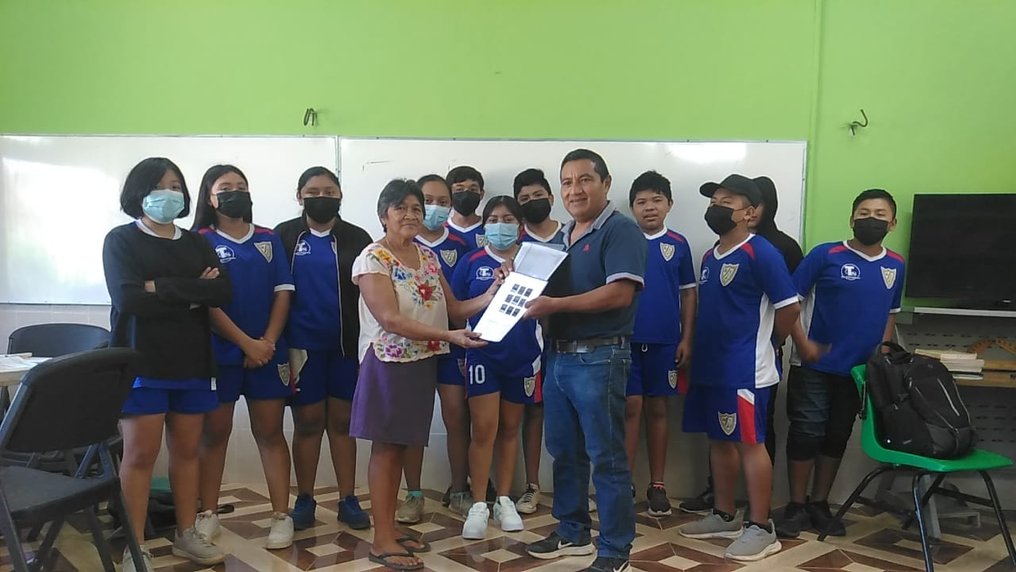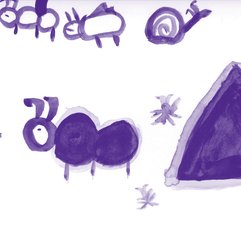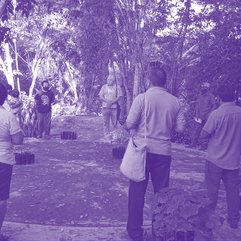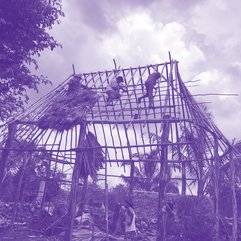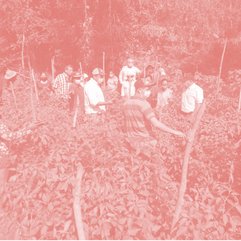"Meliponicultura": Stories and Knowledge Exchange
The Melipona bee, xunáan kaab in the Yucatec Maya language, is a stingless bee that is native to Central and South America. It has been cared for by Mayan communities since pre-Colombian times. As a pollinator, the Melipona bee plays an important role in these rich ecosystems and is therefore essential for preserving biodiversity. At the same time, these native bees and their habitats are threatened by the destruction of forests and the use of pesticides in industrial agriculture. The agroecological school U Yits Ka'an has been working with the keeping of these bees, known in Spanish as meliponicultura, for decades, practicing it in association with ancestral Mayan knowledges and cosmovision. Atilano Ceballos Loeza states:
Perhaps we could say, with all propriety, that the grandmothers and grandfathers of yesterday and we their offspring of today come in part from the bees and all this biodiversity, which is being threatened today more than ever. Without bees there are no ecosystems and without ecosystems there is no life.
The collaborative process with the school U Yits Ka'an involved various stages and formats and the participation of beekeepers, epigraphists, farmers, poets, and local children between the ages of 6 and 15, as well as a number of illustrators. There are many outcomes this process initiated such as a multigenerational picture book and an animation film about the Melipona bee.
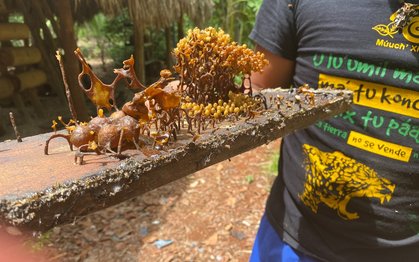

To structure the diverse range of materials on and knowledge about the Melipona bee, five central themes were identified in dialogue with U Yits Ka'an. These were organized as chapters, which included the Melipona bee’s role in the web of life in the forest; the symbiosis that developed between the apiculture of the Maya and the stingless bees over thousands of years; the role of the Melipona bee in Mayan cosmovision; the different uses of bee products; and environmental threats to bees and meliponicultura. Working groups composed of representatives of the agroecological school U Yits Ka'an, Melipona beekeepers, local farmers, and Mayan epigraphers worked together to identify content and provide visual references. These materials served as a starting point for the work of the writers of the children’s book and the animated film.
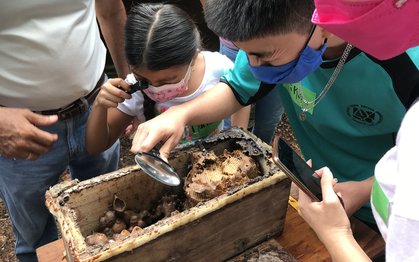

The agroecological school U Yits Ka'an organized together with artist Vanessa Rivero a workshop for children on meliponicultura on October 21st in Maní and on October 23rd 2021, in Valladolid on the occasion of the xunáan kaab festival, a revival of ancestral celebrations around the Melipona bee culture. The aim of the workshop was to connect the children to the traditional knowledge, culture, and cosmovision of keeping native bee varieties, hoping to encourage young people thereby to continue this work and its traditions and to pass on what they have learned to other children. The workshop addressed questions ranging from the Melipona bee’s habitat and its relationship with the environment, to traditional beekeeping practices, and how the Melipona bee, or xunáan kaab, serves humans through products that can be used as food, for their healing properties. The children visited meliponarios, the local beekeepers. Based on their encounters and experiences wrote letters to the bees, created prayers and drawings, and learned how to make medicinal products out of honey. Drawing was a central element to the workshop and was used as a method to observe with focused attention, interact, and learn about the interconnection within their own territory and lives.

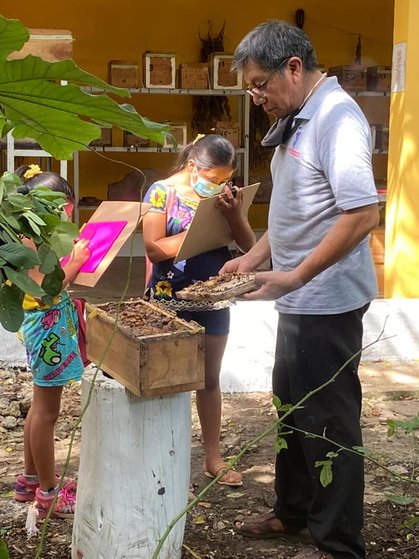
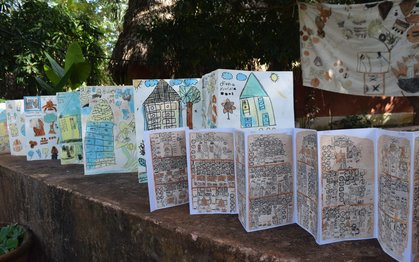

The agroecological school U Yits Ka'an organized together with Julián Dzul Nah and Abrahán Colli Tún, researchers, program facilitators and local networkers in Yucatán, organized a workshop for children on Melipona bees focused on different forms of storing memory, such as memories that are written into the landscape, pre-Columbian texts, ceremonies, sacred places, and milpa seeds. Although the colonizers burned much of the ancestral Maya writings in the town close to where the school is located, a few written testimonies have survived. Together with writer and epigraphist Daniela Esther Cano Chan the children have been studying representations of bees, beekeeping, glyphs, and deities in the so-called Madrid Codex, as well as observing bees and beekeeping. Working from the question, “How do we communicate the life of the bees to future generations?” they created their own codex, the “Codex Maya Xunáan Kaab”. The children, most of whom speak Spanish and Mayan, have incorporated what they learned, for example about local variations of bees and tree species, and have passed this on in their families.
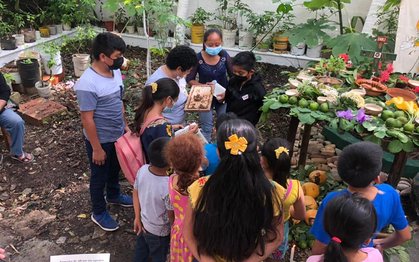

The main objective of the workshop was to talk about the role of Melipona bees in local ecosystems. The workshop that was facilitated by U Yits Ka'an together with Julián Dzul Nah and Abrahán Colli Tun, emphasized how the pollen exchange of the native stingless bees allows plants to reproduce, thus sustaining life. Miguel Mejía, a biologist, introduced the topic of pollination. Marcelo León, from the organization Dzemucut, spoke about how he performs manual pollination in his own cornfields. He presented two varieties that he established through extensive breeding processes: Kuxtal I and Kuxtal II. He described how pollinating insects such as bees work together with humans and how both mutually benefit from the process of breeding different varieties of corn that are adapted to the natural conditions on the ground. During a tour of the school garden, the children collected various flowers and learned about their different parts, which they viewed under a microscope, with a magnifying glass, and as a projection. While looking closely at the pollen of the flowers, they were challenged to think about how such small things can have great significance. The workshop ended with the children writing a letter to the bees to express their appreciation for their pollination work.
Acknowledgements
Ricardo Arzápalo , Regina Carolina Caamal Yah , Daniela Esther Cano Chan , María José Cárdenas Portillo , Fátima Castillo , Atilano Ceballos Loeza , Omar Said Charruf , María Elisa Chavarrea Chim , Santos Chimal , Abrahán Jesus Collí Tun , Mauricio Collí Tun , Julián Dzul Nah , Arit Noemí Euán , Roseli Jiménez Balam , Iván Jiménez Balam , Marcelo León , Raúl Lugo Rodríguez , Miguel Mejía , Francisca Moo , Adolfo Pech , Vanessa Rivero , A. Sasil Sánchez Ch , Alfredo Serralta , Emilio Torres , María Torres , Minelia Guadalupe Xiu Canché
This text is based on the accounts of the agroecological school U Yits Ka'an and was shortened and adapted for its use on this website by Spore Initiative.



